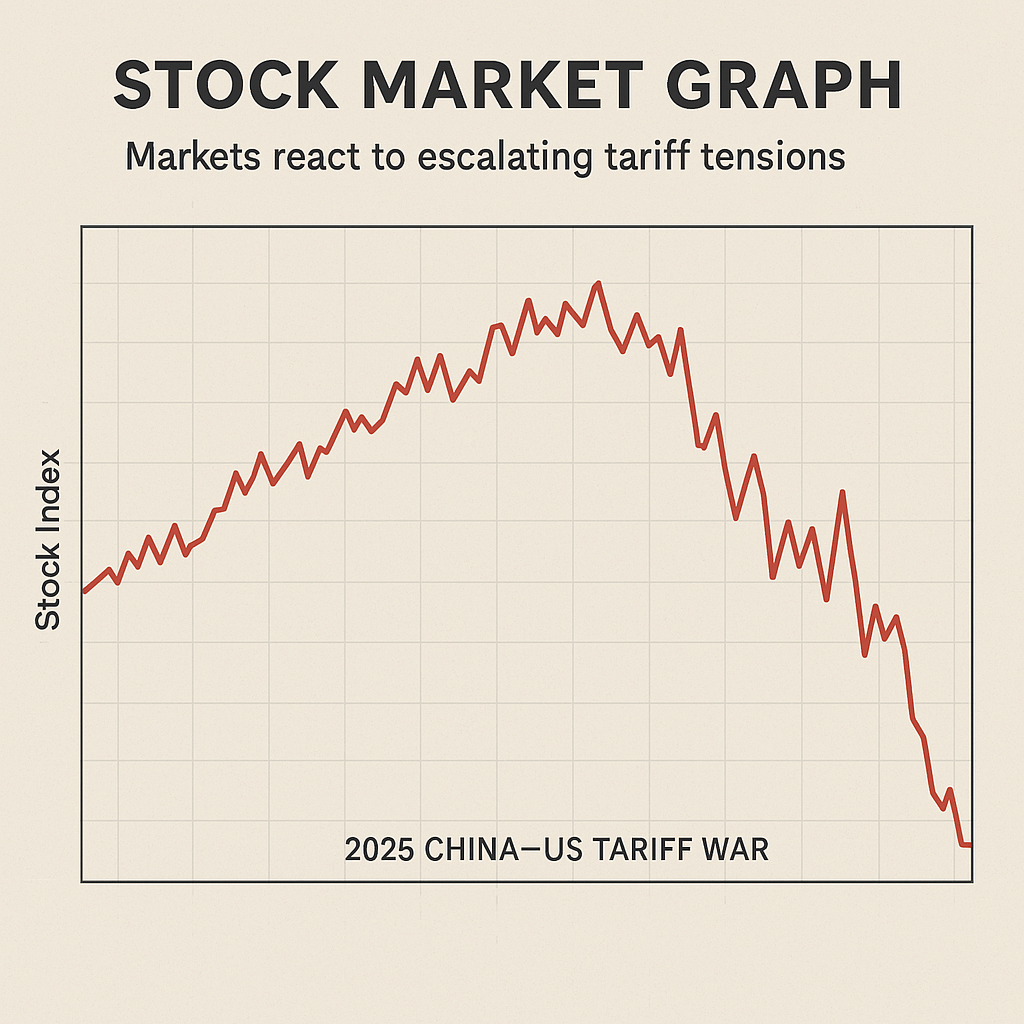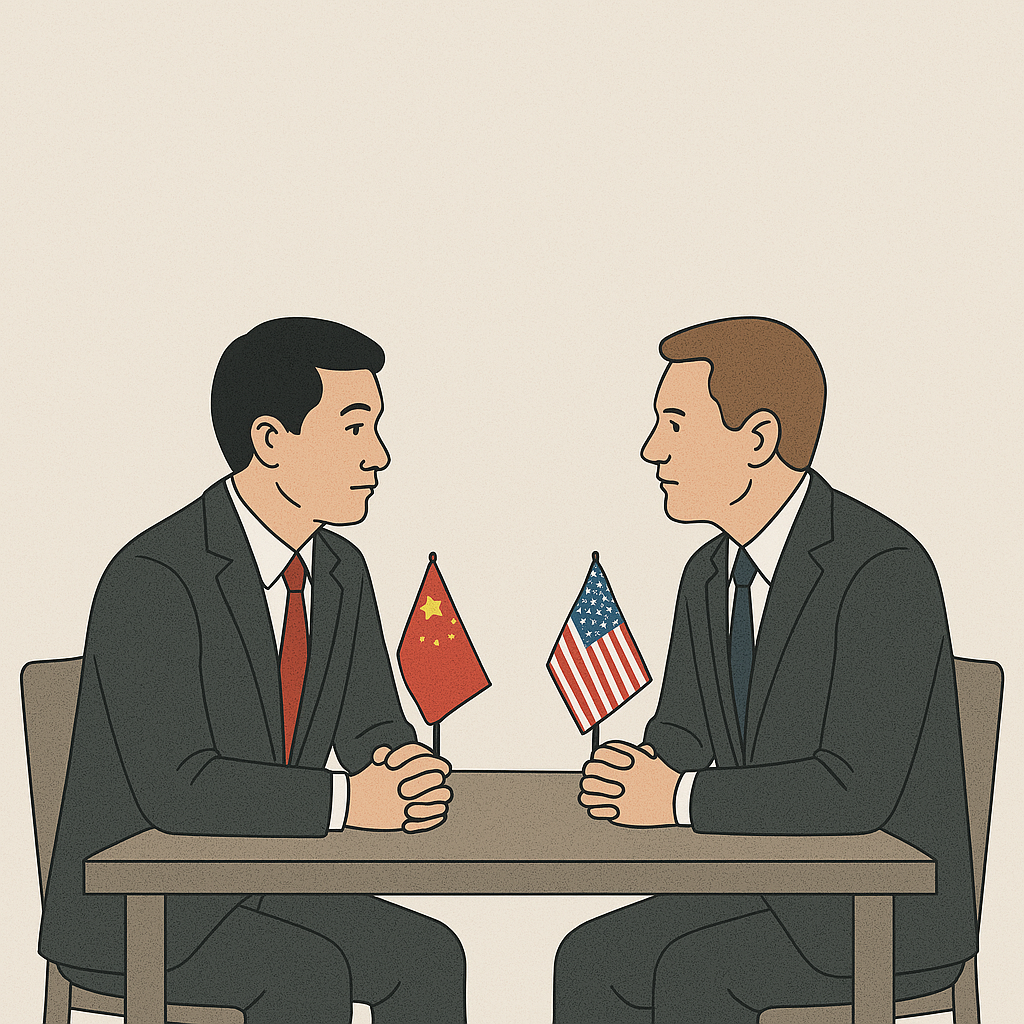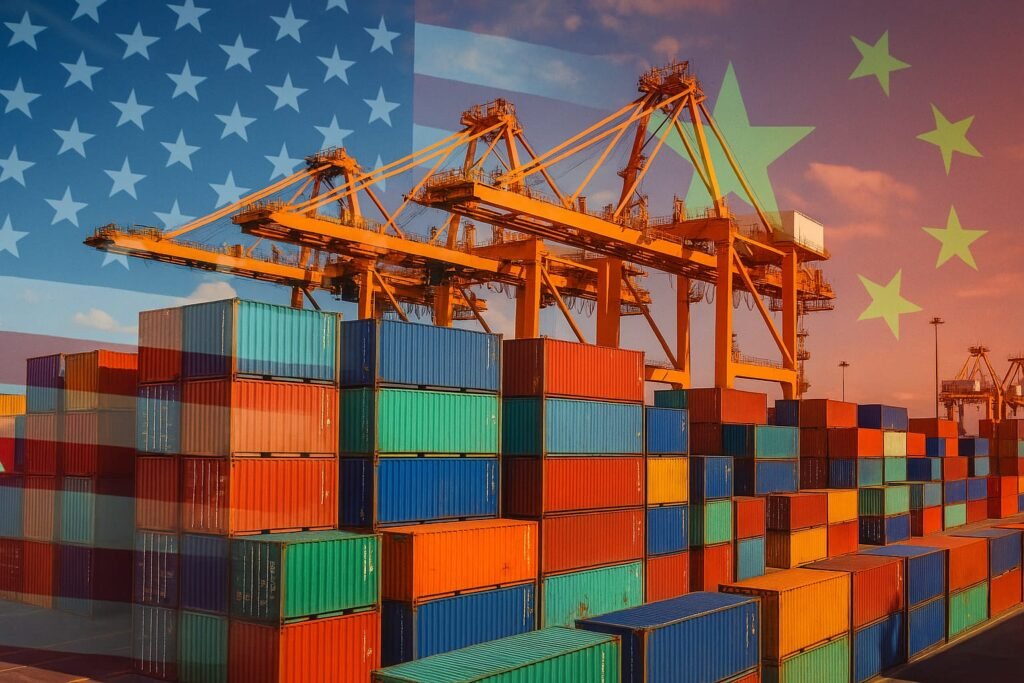Hello everyone! You’ve undoubtedly heard that the US-China trade battle is intensifying once more if you’ve been paying attention to the news. China dropped a huge bombshell on April 12, 2025, when it raised tariffs on US imports to an astounding 125%, with immediate effect. Let me tell you, the whole market is experiencing the shockwaves from the US raising its own taxes on Chinese goods to 145%. What is causing this trade war, and what does it signify for the global economy? Let’s get started with an approachable, non-technical explanation that includes the most recent facts and a few illustrations to help you understand it all.
Did you miss our last take on global trade tensions? Catch up here for the backstory

What’s Fueling the China-US Tariff War?
Consider tariffs as the punches used by the US and China, two heavyweight boxers engaged in a duel in the ring. A tariff is a levy placed on imported goods with the intention of safeguarding domestic companies or exerting pressure on another nation to alter its policies. However, when both sides continue to swing, everyone is affected, from CEOs to consumers.
The most recent round began when President Trump of the United States increased tariffs on Chinese goods to 145%, which included a reciprocal tax of 125% and a 20% levy relating to fentanyl. China did not remain silent and responded by imposing a 125% tariff on all US exports, referring to the US actions as “unilateral bullying” and a “joke” in the world economy. This back-and-forth is part of a trade war that’s been simmering since 2018 but is now hitting a fever pitch.
Why the 125% Tariff from China?
China’s not just throwing numbers around—there’s strategy here. Let’s break it down:
- Following the US Lead: China’s 125% tax is a retaliation to demonstrate that they are not backing down after the US’s 145% tariff was a straight jab. Even if they have indicated that this may be their final tariff increase for the time being, it is a display of strength.
- Protecting Local Markets: Increased tariffs drive up the cost of US products in China, such as tech, autos, and soybeans, allowing local businesses to gain market share.
- Global Posturing: China is urging other countries, such as the EU, to unite against what they perceive to be unfair economic practices by denouncing the US as a “joke.” Pedro Sánchez, the prime minister of Spain, was even informed by President Xi Jinping that “a tariff war has no winners.”.
It’s a high-stakes chess game, and both sides are playing for keeps.
Real-Time Impacts of the 2025 Tariff War
This isn’t just a policy debate—it’s shaking up the world as we speak. Here’s what’s happening as of April 13, 2025:
- Market Volatility: Following China’s decision, European markets collapsed, with France’s CAC falling 1.11% and Germany’s DAX falling 1.62% by April 11. Despite wild fluctuations, US markets concluded the week higher, with the S&P 500 rising 3.8%.
- Price Increases in the Horizon: The 125% tariff may make US exports, like as agricultural items, unaffordable in China, while Chinese goods, such as apparel or electronics, may cost more in the US.
- Businesses in Transition: Businesses are rushing. In order to avoid US taxes, some Chinese companies are looking to establish facilities in Southeast Asia, and Micron is imposing tariff surcharges.
- Economic Forecasts Slashed: Citing trade concerns, Goldman Sachs reduced China’s 2025 GDP forecast to 4%. For a nation striving for 5% growth, that is significant.

How Did We Get to This Point?
Let’s rewind for a quick timeline to see how things spiraled:
- Early 2025: Citing trade deficits and fentanyl problems, Trump begins his second term with tariffs on Chinese imports, starting at 20%.
- April 2, 2025: The United States raises its tariff on Chinese imports by 34%, bringing the total to 54%. China matches with a 34% response.
- On April 9, 2025, Trump raises the stakes to 125%, making the total with previous levies 145%. China responds with 84 percent.
- April 11, 2025: China declares US tariffs a “numbers game” devoid of economic rationale, raising them to 125% with effect from April 12.
It’s been a dizzying week, and the stakes keep climbing.
Is There a Way Out of This Trade War?
Is it possible to disentangle this mess? Though history indicates that trade battles frequently conclude at the bargaining table, both sides are speaking strong. While Xi is calling for international collaboration against “bullying,” Trump is advocating for a “fair deal.” Talks may be possible because China has signalled that they might not match further US hikes, but don’t count on a speedy resolution. Businesses are currently diversifying their supply chains, and countries are preparing for economic instability.

Conclusion: Riding the Tariff Storm
With China imposing a 125% tariff on US goods and the US imposing a 145% tariff on Chinese imports, the China-US trade war is changing the face of the world. The consequences are apparent and tangible, ranging from tense markets to impending price increases. However, there is a ray of optimism that conversation may finally calm things down amidst the commotion. Right now, it’s a crazy ride, and the only way to handle it is to be aware.
How do you feel about this trade conflict? Are you just observing from the sidelines or are you already feeling the pinch? Leave a remark; I’d be interested in knowing what you think! Tell a friend about this post if it helped you understand something. Together, let’s continue to explore these significant occasions.


